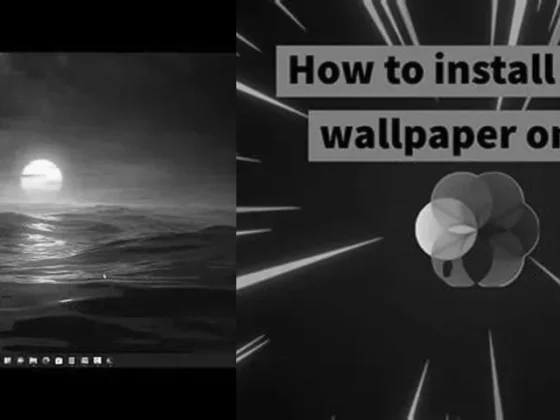How Do I Open Chrome Extensions: Are you tired of fumbling around in the dark, desperately searching for a way to open your beloved Chrome extensions? Well, fret no more! In this comprehensive guide, we will shed light on the elusive process of accessing Chrome extensions with ease. Whether you’re a tech guru or a novice user, we’ve got you covered. So sit back, relax, and prepare to embark on a journey that will unravel the mysteries of opening Chrome extensions. It’s time to take control of your browsing experience like never before!
Accessing Chrome Extensions: A Comprehensive Guide
Chrome extensions enhance your browsing experience by adding new features or modifying existing functionality. For users looking to make the most out of Google Chrome’s capabilities, understanding how to open and manage extensions is essential. Here’s an in-depth look at the processes involved.
Opening Chrome Extensions from the Browser
Accessing your Chrome extensions is straightforward. With Chrome open on your computer, look to the top-right corner for the Extensions icon, which typically resembles a puzzle piece. Clicking on this will reveal a dropdown menu listing all your installed extensions. From here, you can easily manage each extension’s settings or pin them to your browser toolbar for quick access.
Using Chrome’s Menu for Extension Access
If you prefer navigating through Chrome’s menu, select the vertical ellipsis (⋮), also at the top-right corner, to open the More Tools menu. From there, choose ‘Extensions’ to be directed to a page where all your extensions are displayed with options to customize, remove, or get more details about each one.
Running Chrome Extensions Locally
For developers or users who want to test out extensions not yet available on the Chrome Web Store, running an extension locally is a valuable skill. Here’s how:
Step 1: Clone the Extension Repository
Begin by cloning the repository of the Chrome extension you wish to run. This involves creating a local copy of the extension’s code on your machine. Use a version control platform like Git to clone the repository, ensuring you have all the necessary files.
Step 2: Access Chrome Extensions Settings
Open Chrome, and in the Extensions menu, look for the option to manage your extensions. This area allows you to adjust settings and control which extensions are active.
Step 3: Navigate to Extensions
Once in the Extensions settings, you’ll find a list of installed extensions along with various options to control their behavior within Chrome.
Step 4: Enable Developer Mode
At the top of the Extensions page, toggle the ‘Developer mode’ switch to the on position. This allows you to install extensions that are not from the Chrome Web Store.
Step 5: Load the Unpacked Extension
With Developer mode enabled, you’ll see an option to ‘Load unpacked’. Select this, and a file dialog will appear prompting you to choose the directory of your unzipped extension.
Step 6: Select the Unzipped Extension Folder
Navigate to the location where you have the unzipped extension folder saved. Choose this folder to allow Chrome to install the extension.
Step 7: Verify Successful Upload
After selecting the folder, Chrome will process the files. If everything is in order, the extension will be installed, and a new card representing the extension should appear on the Extensions page.
Creating Shortcuts for Chrome Extensions
Using shortcuts can significantly speed up your workflow in Chrome. Here’s how to set them up for extensions:
- Open the More Tools menu by clicking on the vertical ellipsis (⋮) in the top-right corner of Chrome.
- Select ‘Extensions’ to open the Extensions page.
- Click on the hamburger icon (≡) in the upper left corner of the Extensions page.
- Choose ‘Keyboard Shortcuts’ from the side menu.
- In the Keyboard Shortcuts section, you’ll find a list of your installed extensions. Here, you can assign a combination of “Ctrl” or “Ctrl + Shift” and any other key to create a shortcut for quick access.
Once you’ve set up your shortcuts, using them will activate the corresponding extension without having to navigate through menus.
Locating Chrome Extension Files on Your System
If you need to find the actual files for your Chrome extensions, they can be located in specific paths depending on your operating system:
- For Windows users:
C:\Users\[Username]\AppData\Local\Google\Chrome\User Data\Default\Extensions - For macOS users:
~/Library/Application Support/Google/Chrome/Default/Extensions - For Linux users:
~/.config/google-chrome/Default/Extensions
Replace “[Username]” with your actual Windows username to navigate to the folder containing the extension files. On macOS and Linux, the tilde (~) represents your home directory.
Conclusion
Whether you’re a casual user looking to enhance your browsing experience or a developer eager to test and debug Chrome extensions, understanding how to access, manage, and run these powerful tools is key. By following the steps outlined above, you can take control of your extensions and customize Chrome to your liking. Remember to use shortcuts to save time and keep your extension files organized so you can easily troubleshoot any issues that may arise.
FAQ & Related Questions about How Do I Open Chrome Extensions?
Q: How do I open Chrome extensions?
A: To open Chrome extensions, follow these steps: On your computer, open Chrome. At the top right, select Extensions.
Q: How do I run a Chrome extension locally?
A: To run a Chrome extension locally, follow these steps: clone the extension repository, access Chrome extensions settings, navigate to extensions, enable developer mode, load the unpacked extension, select the unzipped extension folder, and verify successful upload.
Q: What is the shortcut to open Chrome extensions?
A: The shortcut to open Chrome extensions is to open the More Tools menu, select Extensions, and click on the hamburger icon in the upper left.
Q: Why don’t I see all my apps, extensions, and themes in Chrome?
A: If you don’t see all your apps, extensions, and themes in Chrome, you may need to sign in to the same account in Chrome and the Chrome Web Store. To do this, click Menu at the top right in Chrome.
Q: Why can’t I use my Chrome extensions?
A: Some Chrome extensions may be disabled due to their settings. You may need to manually enable them every time you want to use them. The methods to enable Chrome extensions can vary. For some extensions, you just need to click their icon to enable them.


